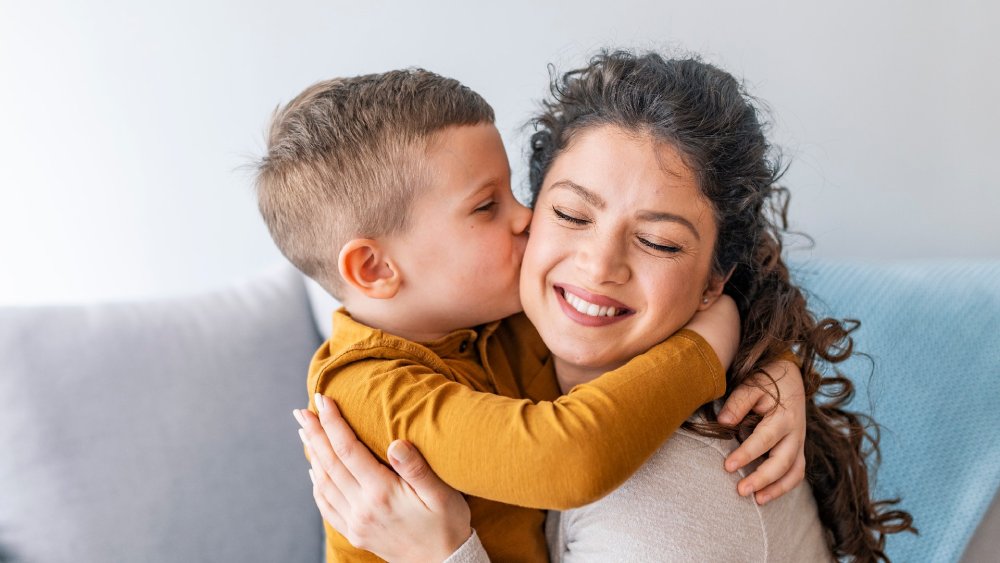The Parenting & Family Blog

Teaching Kids Gratitude: The Power of Saying Thank You
In today’s fast-paced world, teaching kids gratitude is more important than ever. Gratitude is not just a simple act of saying “thank you” but a profound appreciation of the world around us. It fosters a positive outlook, enhances relationships, and contributes to overall happiness. Parents, guardians, and educators can help children develop this important trait. It can lead them to become well-rounded and caring individuals.
Gratitude is important, and teaching it to children can change lives. This blog will share the best ways to raise thankful children. You’ll find practical tips and expert advice on teaching kids appreciation. This guide is for parents wanting to boost their child’s emotional intelligence and educators seeking a better classroom. It offers the tools you need.
Why It Matters

The Relevance of Teaching Gratitude to Kids
Gratitude isn’t just polite; it’s a strong tool that can influence a child’s growth in many ways. Teaching kids gratitude gives them skills that will help them for life. Grateful children tend to be more optimistic. They also have better relationships and show more happiness and satisfaction.
Real-Life Applications and Data-Backed Insights
- Improved Mental Health: Studies have linked gratitude with reduced symptoms of depression and anxiety. Teaching kids gratitude can build resilience and a positive mindset. These traits are key for facing life’s challenges.
- Enhanced Social Skills: Grateful children tend to be more empathetic and considerate, making them better equipped to form and maintain healthy relationships.
- Academic Success: A study published in the Journal of Happiness Studies found that students who practice gratitude tend to perform better academically. This is attributed to their increased motivation and positive attitude towards learning.
- Physical Health Benefits: Gratitude has been associated with better sleep, reduced stress, and improved overall physical health. Encouraging children to express gratitude can contribute to their well-being.
Actionable Insights
Best Ways to Raise Thankful Children
Raising thankful children requires intentionality and consistency. Here are some practical steps to help you instil appreciation in kids:
Lead by Example
Children learn by observing the adults around them. Demonstrating gratitude in your daily life is one of the most effective ways to teach this value.
- Express Gratitude Openly: Make it a habit to say “thank you” for both big and small gestures. Show your kids how to appreciate the world. Thank a waiter or enjoy a sunny day together.
- Recognise Efforts: When your child does something kind, show them you appreciate it. This reinforces the idea that their actions have a positive impact.
Create Gratitude Rituals
Incorporating gratitude into daily routines can help children develop a habit of appreciation.
- Gratitude Journals: Encourage your child to keep a gratitude journal where they write down things they are thankful for each day. This practice can help them focus on the positive aspects of their lives.
- Thankful Discussions: Set aside time during family meals to discuss what each member is grateful for. This not only fosters gratitude but also strengthens family bonds.
Encourage Acts of Kindness
Acts of kindness are a practical way for children to learn about gratitude and its impact on others.
- Volunteer Together: When families do community service or charity work, kids learn to give back and value what they have.
- Random Acts of Kindness: Encourage your child to do small kind things. They can help a neighbour or share their toys. Discuss how these actions make them and others feel.
Teach the Value of Things
Helping children understand the value of what they have can foster a sense of gratitude.
- Involve Them in Household Tasks: Assign age-appropriate chores to your children. This shows them how much work it takes to run a home. It can also help them appreciate the comforts they have more.
- Discuss Money Matters: Teach your children about budgeting and the cost of items. Understanding that resources are not unlimited can help them appreciate what they have.
Additional Expert Tips & Common Mistakes to Avoid
Best Practices Beyond the Basics
- Model Gratitude in Tough Times: Teach your child to find things to be thankful for, even when it’s hard. This resilience is a valuable life skill.
- Use Gratitude Language: Incorporate phrases like “I’m grateful for…” or “I appreciate…” into your vocabulary. This reinforces the concept of gratitude as a natural part of communication.
Common Mistakes and Misconceptions
- Focusing Only on Material Gratitude: It’s good to be thankful for gifts and things. But make sure your child also values non-material things, like relationships and experiences.
- Forcing Gratitude: Gratitude should be genuine. Avoid pressuring your child to express gratitude if they don’t feel it. Instead, guide them to understand and appreciate the reasons behind their gratitude.
Expert Recommendations
Unique Industry Perspectives
- The Role of Schools in Teaching Gratitude: Schools can help build a culture of gratitude. Adding gratitude exercises to the curriculum can foster a positive learning space. It also helps students value their education more.
- Technology and Gratitude: Teaching gratitude with technology can help in today’s digital world. Apps and online platforms that encourage gratitude can engage tech-savvy kids.
Lesser-Known Insights
- Cultural Perspectives on Gratitude: Different cultures have unique ways of expressing gratitude. Talking about these with your child can help them understand and appreciate different global views.
- The Science of Gratitude: Learning about how gratitude affects our minds and bodies helps us see its true benefits. Gratitude can activate the brain’s reward system. This boosts feelings of pleasure and satisfaction.
Raising Thankful Hearts: Teaching Kids the Power of Gratitude

Teaching gratitude to kids is a journey that requires patience, consistency, and creativity. You can raise thankful children by leading by example. Create gratitude rituals, encourage kindness, and teach them to value things. This helps them appreciate the world around them.
As you embark on this journey, remember that the goal is not perfection but progress. Celebrate small victories and continue to nurture your child’s growth in gratitude. By doing this, you’ll enrich their lives and help create a kinder, more caring society.
Help your child begin a gratitude journal today. You could also plan a family volunteering activity for this weekend. These small steps can lead to a lifetime of appreciation and fulfilment. What are you grateful for today? Share your thoughts with your child and begin the conversation.









